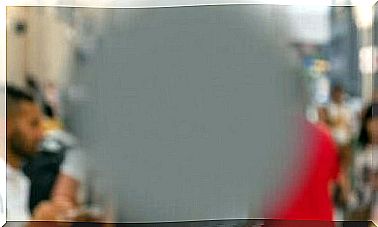How To Diagnose Dyslexia?

Diagnosing dyslexia is a process that shouldn’t be short or quick. On the contrary, health teams are slow to determine the existence of the disorder, as it opens up a range of possible treatments and future approaches.
The quality of life of a person with dyslexia may be good, but this will depend on early detection and subsequent support. Multidisciplinary treatment is the key to incorporating the patient into normal and social life.
What is dyslexia?
To diagnose dyslexia, we must start by defining it. Basically, it is a learning disorder, specifically reading and writing, starting in childhood, associated with the lack of scope of certain parameters that are expected at each age of the child.
What is striking is that people with the disorder usually don’t have an associated problem that explains it from the outside. In other words, no physical or psychic changes that determine the existence of a learning failure are detected.
A dyslexic child does not learn the alphabet and finds it difficult to identify letter by letter. The sounds of the words also become awkward, with serious obstacles to knowing what you are reading, to the point that they change the syllables when reading them, substitute them or distort them. When it is detected that they have interpretation difficulties, the reading becomes slower and hesitant.
Some authors focus problem definition on the ability to decode the message. That is, the child with dyslexia has not developed the ability to assume the code that others speak, so something prevents the transformation of the word into meaning.

Symptoms to Diagnose Dyslexia
Achieving a diagnosis of dyslexia is complicated because it depends on the interpretation of health professionals. In the absence of complete confirmatory evidence, criteria are met to establish the presence of the disorder.
difficulty reading
This is perhaps the initial and most prominent sign. In dyslexia, the child reads poorly because he uses multiple tools to arrive at a supposed meaning of words.
Changes one letter to another, modifies syllables, words and sounds, repeats and reads very slowly. Once you’ve finished reading, you don’t know what the text said, as the sound of the alphabet doesn’t correspond to a cognitive meaning already worked out in your mind.
writing problems
Reading difficulty undoubtedly affects writing. In dyslexia there is a repetition of the mistakes of the previous point when it comes to putting thoughts into writing. Letters are omitted, hyphens are changed, punctuation marks are not in place and make the text unreadable.
Dyslexic syntax is poor because it doesn’t have adequate tools to express itself. Not always, but sometimes, the scribbling of the letters also changes, being another sign of difficulty.
Disorder focused on l ectowriting
It is not uncommon for dyslexic children to arouse the curiosity of teachers because they have a very good intellectual capacity for almost anything. There is no mental retardation at all, and the maturation of most areas of development is within expected parameters.
Obstacles to achieving lexical tasks
At school, which turns out to be the primary screening site for dyslexia, students with the problem do not perform language tasks correctly. If asked to point out capital letters or find words in a word search, they get lost in the task.
The order and sequencing problem sometimes extends to other more mathematical and geometric areas, although this is not the rule. When this expansion of difficulty happens, children do not learn to multiply or sequence the days of the week, for example.
changed behavior
Suspicion can be reached and dyslexia diagnosed when a very noticeable stress affects the lives of children struggling to learn in school. The delay before the evolution of their peers is enough to arouse emotional symptoms.
Behavioral disorders tend to be relativized in educational establishments. A small problem is supposed to be a consequence of your disinterest in learning, and vice versa. Gradually, the dyslexic enters the category of student of “second class”, with whom it is not necessary to waste time because they will not learn.
There are patients who are diagnosed with depression before dyslexia is detected, and time wasted on mislabeling their condition delays professional help. Even prescription drugs don’t help.

Who can diagnose dyslexia?
As there are no complementary diagnostic methods, such as MRIs or brain tomography, that lead to the diagnosis, it is worth asking: who makes the diagnosis and how?
Within learning disorders and their approach, we would say that psychopedagogists, speech therapists and neuropsychologists are the specialists trained for this task. Through joint tests and assessments, multidisciplinary teams can meet criteria that raise suspicion.
In the end, a report signed by the health team will be the diagnostic certificate and, at the same time, the positive response obtained from the right stimuli for dyslexia will support the expert opinion. The next step is the family and educational commitment to adapt the knowledge acquisition process to each child’s journey.
There is no need to be afraid to consult and talk openly with the psycho-pedagogical offices that are in schools and health centers. As a parent or caregiver, getting a diagnosis of dyslexia in time can completely change a child’s future course.









